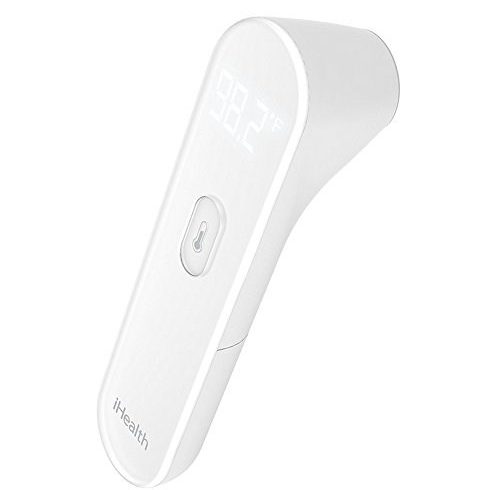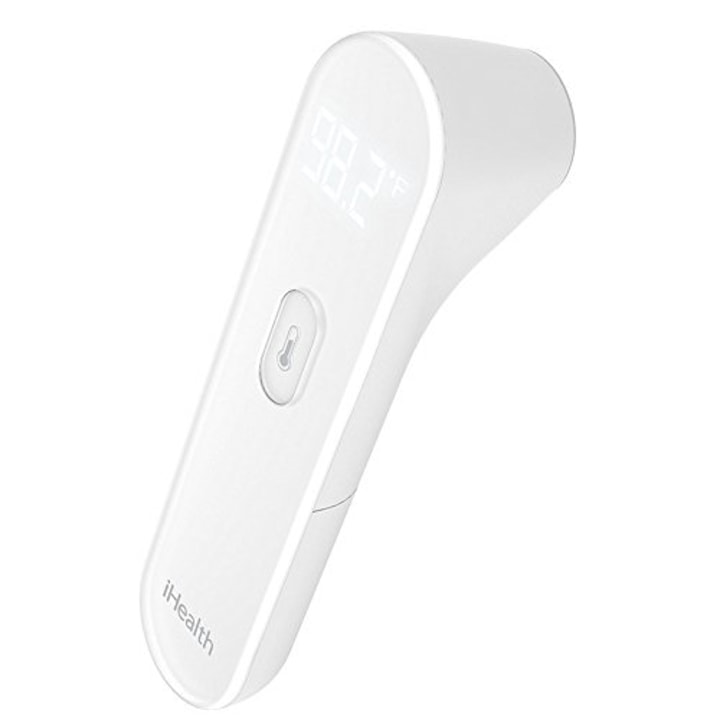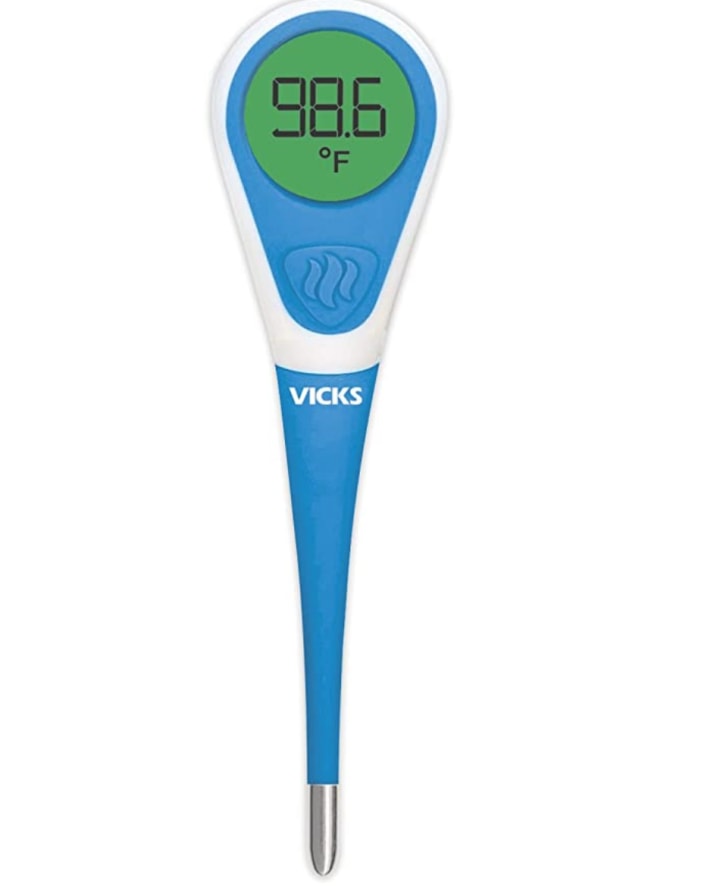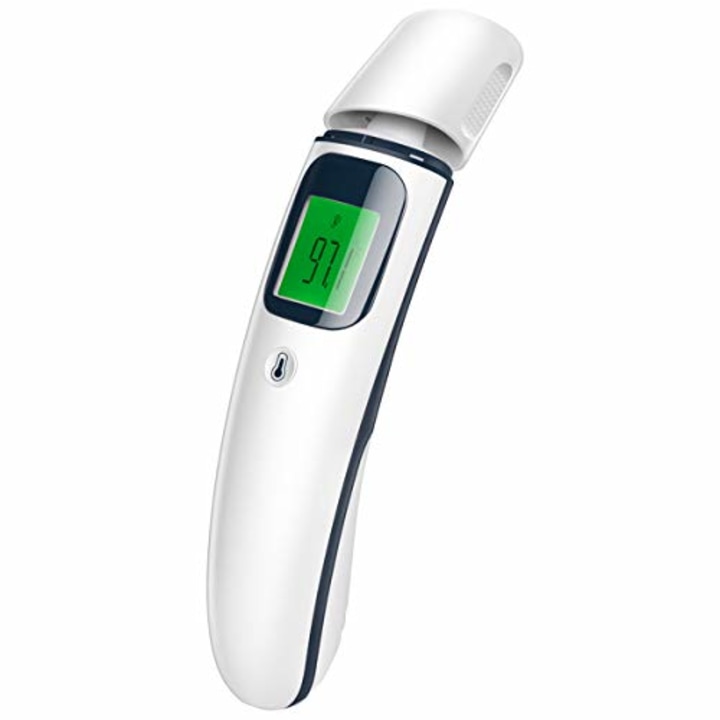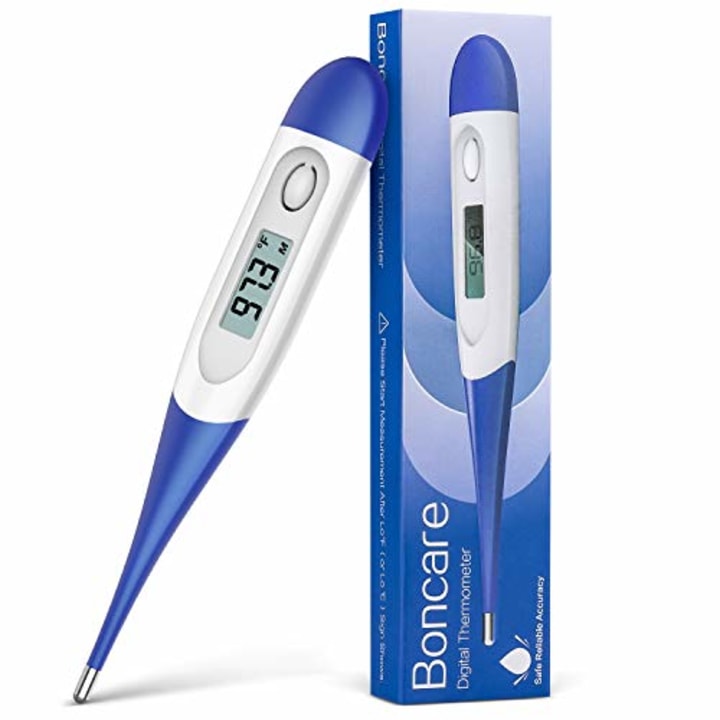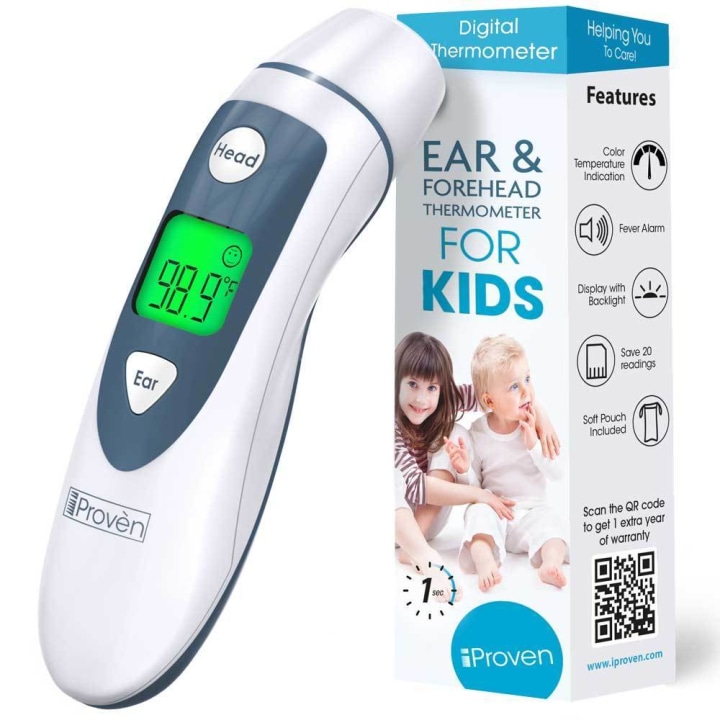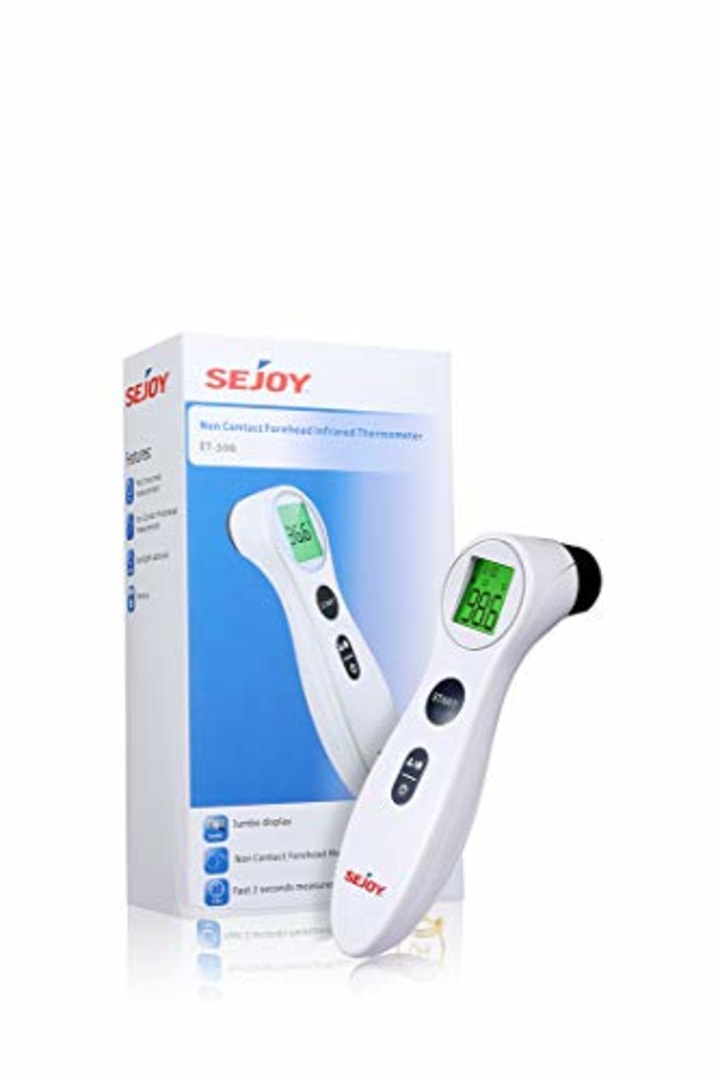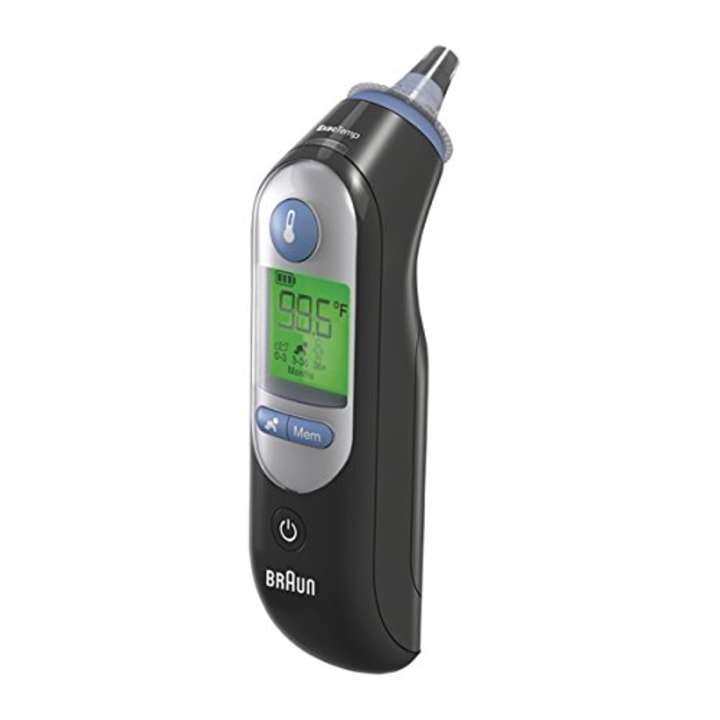Coronavirus, fever and body temperature
Ford says doctors are interested in a patient’s core body temperature when trying to determine if they have a fever or not. What is a fever, then? Medical professionals measure a fever as a temperature that is 100.4 degrees Fahrenheit or above. Ford says many viruses can raise your internal body temperature a little bit, including the common cold. If it’s not 100.4 degrees Fahrenheit or higher, he added, it’s not considered a fever.
As listed by the CDC, a fever is but one symptom of the coronavirus. However, Ford urges people to understand that you can still test positive for the coronavirus if you do not have a fever. “A fever is just one of many ways the coronavirus presents itself,” says Ford. “It is not the whole story, however.”
Ford also notes that daily variation in one’s temperature is very common with most viruses, as are variations within the day: You may be fine in the morning and then spike a fever in the afternoon or evening. This fluctuation is often seen in COVID patients, he added, encouraging COVID patients to anticipate changes in their temperature throughout the day and to keep track of when they usually spike a fever, useful information can be helpful in determining when to take medication like Tylenol to keep a fever down.
Digital thermometers 101
Ford says gone are the days of mercury thermometers — digital thermometers are now the way of the world. According to Ford, virtually all digital thermometers equip similar technology and function similarly. But just like with phones and computers, you can get high-quality technology and you can get cheap technology when it comes to thermometers — you get what you pay for, Ford argues. Pricier thermometers may be more reliable and durable than lower priced options — and may give better temperature readings.
Which type of thermometer is the best to use?
Thermometers come in a variety of designs, from ones designed for your ear or mouth to those that measure from a distance. Ford says doctors tend to rely on thermometers that read as close to the core body temperature as possible, noting that under-tongue thermometers tend to give the most accurate readings, and are used widely by doctors. However, Ford noted non-contact thermometers are also useful, especially during the pandemic. His practice uses them to run temperature screenings for both patients and staff.
Overall, Ford says he relies on thermometers that go under the tongue for at-home use. They can be cleaned easily with alcohol and give a clear digital reading. If you have kids, though, it might be hard to get them to sit still while you’re taking their temperature. In this case, Ford recommends using a thermometer that goes in the ear, or a forehead thermometer.
How accurate are non contact infrared thermometers?
Non-contact infrared thermometers have become increasingly popular during the pandemic, Ford said:
- They don’t have to be sterilized each time they’re used since they don’t come into contact with a person’s skin.
- You also don’t have to get very close to someone when taking their temperature.
In terms of accuracy, Ford notes the temperature reading from a non-contact infrared thermometer may be affected by factors other than your temperature. These factors include ambient light and temperature, and what a person was doing before they had their temperature taken. For example, if your temperature is taken with an infrared thermometer after you walk down the street, it’s going to be higher than if you were just sitting in an air conditioned building — physical activity increases the heat emanating from the skin. Using a non-contact infrared thermometer properly also contributes to how well it reads one’s temperature. The FDA outlines how to use this type of thermometer, and Ford says there are often instructions listed on thermometers’ packaging.
According to Ford, infrared thermometers tend to read a bit low, noting a single degree’s margin of error. He added that non-contact infrared thermometers are consistent. “People just have to be aware that there might be a little bit of variation depending on other circumstances,” says Ford.
How often should you take your temperature during the pandemic?
Overall, taking your temperature is a good practice to get in the habit of during the pandemic. The CDC suggests monitoring your health daily as a way to protect yourself from contracting the coronavirus, or spreading it if you start to show symptoms. The CDC states that monitoring symptoms is especially important if you are running errands, going to the office or school, or in settings where it’s difficult to maintain six feet of physical distance. People may not perceive when they’re starting to show COVID symptoms, and asymptomatic COVID carriers can spread the virus.
Best thermometers of 2020
Pandemic or not, Ford encourages people to have a thermometer in the house. He says we never know what we’re going to be facing — as the coronavirus has proven. This is especially relevant as we head into flu season. If investing in a thermometer is on your to do list (like it is on mine), here are some of the best and most highly-rated options on the market. Many can be used on those of people of all ages, but some brands also make thermometers specifically for kids and babies.
1. iHealth No-Touch Forehead Thermometer
Amazon’s No. 1 bestselling health care thermometer uses infrared technology to read one’s temperature from about 3 centimeters (or about 1.2 inches) away. Aim the probe at the center of your forehead, press the measurement button to start the test and the thermometer will vibrate once the reading is complete. In addition to a temperature sensor, the thermometer features distance and environmental sensors that adjust the readings for accuracy. It’s designed to deliver a reading in about one second, showing readings in large, white LED lights that can be seen in dark environments.
2. Vicks Comfort Flex Thermometer
This thermometer is equipped with the brand’s Fever Insight, designed to help you understand the meaning of a temperature reading using a color-coded display.
- A green display indicates no fever
- A yellow display indicates an elevated temperature
- And a red display — shown when a temperature is 100.4 degrees Fahrenheit or above — indicates a fever.
The thermometer also recalls the last reading it performed, making it easy for you to compare your temperature throughout the day. This thermometer can be used orally, rectally or under the arm, and it’s waterproof.
3. Chooseen Digital Forehead and Ear Thermometer
You can take your temperature two ways using this thermometer:
- Holding it up to your forehead
- Or inserting it into your ear
The top of the thermometer relies on infrared to take your temperature when held against your forehead. When it’s removed, it reveals an ear probe that can be used for babies, children and adults. This thermometer features a backlit screen for easier reading and performs a reading in about one second. It can store up to 35 readings. The thermometer also includes a fever warning system — it displays a green light for a normal temperature, an orange light for light fever, and a red light for high fever. The thermometer also equips an alarm that goes off if a fever is detected.
4. Boncare Digital Oral Thermometer
Great for traveling or for students to keep in their backpacks, this thermometer is compact and comes with a storage case. It delivers a temperature reading in 10 to 20 seconds and can recall its last reading. The thermometer can be used with or without probe covers, and it’s easy to clean with alcohol. It can be used orally, rectally or under the arm.
5. iProven Medical Digital Ear Thermometer
This thermometer has sensors that measure the radiation emitted by your eardrum or forehead to read your temperature. Hold the thermometer up to your or your child’s forehead or use the attached ear probe for infants who are at least six months old. A reading is delivered in one to three seconds and it can store up to 20 readings. The thermometer will sound three beeps and show a red warning light if a fever is detected or a green light if it reads a normal temperature.
6. Sejoy Forehead Thermometer
Keep this thermometer on hand in households with multiple people. It’s a no-contact option that uses infrared technology to measure the temperature of the skin surface over the forehead. It displays large and easy-to-read numbers and beeps when a temperature reading is complete. It also has a fever indicator that shows a frowny face if a temperature over 100 degrees Fahrenheit is detected. The thermometer will shut off when it’s not in use and it can store up to 10 readings, along with the date and time that the reading was done.
7. Braun Thermoscan 7 Digital Ear Thermometer
Select your age group — or that of the person whose temperature you’re taking — to get a more precise reading from this thermometer. You can choose from three age groups: 0-3 months, 6-36 months and 36 months to adult. The thermometer’s screen also lights up green for a normal temperature, yellow for a raised temperature and red for a fever. It features a pre-warmed ear probe for increased comfort and comes with single-use probe covers. A light flashes and the thermometer beeps when the ear probe is in the right position and it performs a temperature reading in seconds. This thermometer can recall the last nine temperatures it read, too.
More shopping guides and recommendations
Catch up on the latest from NBC News Shopping guides and recommendations and download the NBC News app for full coverage of the coronavirus outbreak.

